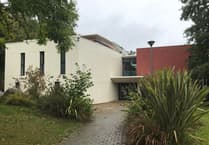I SYMPATHISE with Mr Antcliffe's concern (Letters, March 3) over the devastation caused in the construction of the cycle route between Horrabridge and Tavistock; in fact, I had similar views about the work done on Roborough Down, initially.
However, like the poacher turned gamekeeper, I have come to realise that the benefits obtained from a decent cycle track that could be used by every kind of cyclist, rather than just dedicated mountain bikers, outweighs enviromental objections. I believe that when the construction of the latest link in what is part of a national cycle route is finished and the habitat returns eventually to its natural form, the result will justify the means.
In this climate of pollution and soaring petrol prices the bike and the bus are the only (apart from walking) viable means of travel. The reason this part of the track is not used at the present time is because after Bedford Bridge it is only suitable for die-hard mountain bikers. When it is completed it will be useable by cyclists of all calibres and will be as busy as the Plymbridge track which together with Burrator Reservoir attracts hundreds (not handfuls) of cyclists every day.
As far as costs are concerned, £600,000 is European-funded. All right, so that still leaves £1.5-million to be found, and maybe as Mr Antcliffe says there are other priorities, but I for one think that is a very worhwhile one.
Tony Rushbrooke
YOUR report on the preliminary work on the construction of the cyclist-pedestrian bridge over the River Walkham does not say why the name of an insignificant, long abandoned mine was chosen.
Are we to assume that the mandarins at county council do not know that the bridge will be on a site on one of the Isimbard Kindom Brunel's splendid timber over masonry viaducts; that the timber lasted from 1859 to 1911 before being replaced by steel until all was demolished after totally unjustified closure of the line in the Beeching-Marples vandalism of the 1960s?
It was called the Walkham Viaduct. The splendid historical association would have been retained if the local history societies an the Tavistock Museum had been consulted. But mandarins do not consult, they instruct. This and the proposed imposition of street meters is proof enough. Sadly, such situations are likely to continue and as local government is subordinated to the remote government of country councils.
G Kirkpatrick
Tavistock



